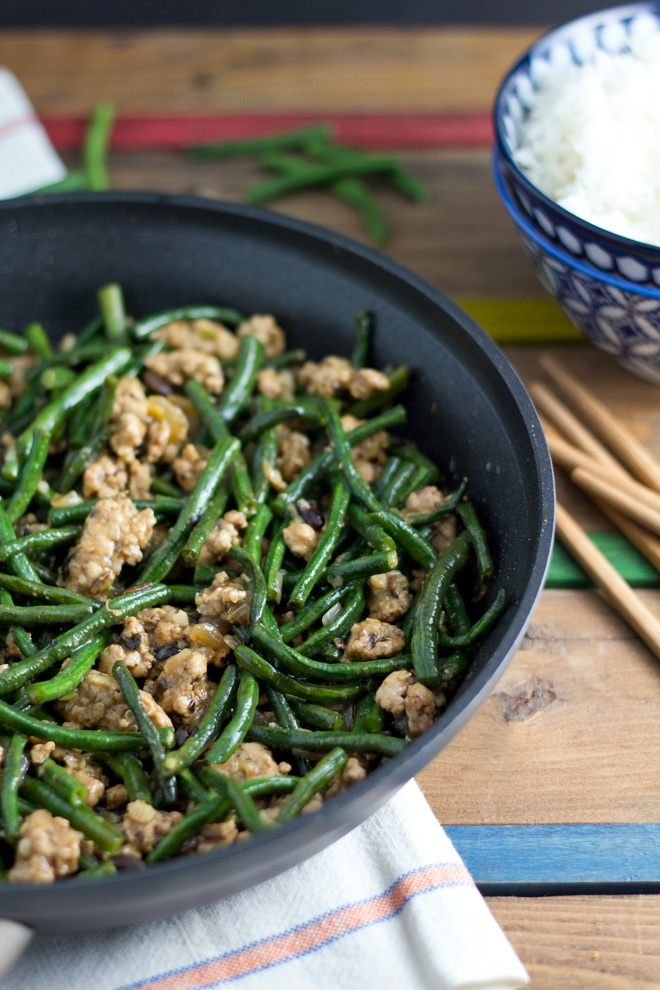THIS. This chicken dish will knock your socks off! It's Hakka recipe #2 I'm sharing with you this year and you're gonna LOVE it. You should already know by now that I adoreThe Hakka Cookbook by Linda Lau Anusasananan. This soy-glazed black pepper chicken recipe is what I'll be keeping for the rest of my life, and I'm not kidding here. It's one of the simplest chicken dishes you'll ever cook and it's got a big punch of flavors.
Linda had learned this chicken dish from a man named Ying Hsien who's father is a Hakka. Ying Hsien grew up in Northern India, and had moved to Toronto after the Sino-Indian war in the 60's because jobs became harder to find for the Chinese living in India. This soy-glazed black pepper chicken is what Ying Hsien learned from his mother in India, and I simply just can't believe that all it takes are four ingredients to produce such a distinct taste.
Don't let the color fool you! The chicken might look really really dark but it's not because the chicken is burnt. It's dark because of the use of dark soy sauce. I added water to the original recipe but if you're looking for a thicker, stickier sauce, adding less water to the pot will do the trick. The sauce will thicken up and reduce a bit as it cooks. I also deviated from the original cooking instructions and decided to sear the meat before braising which in my option makes a more tender bite. Searing will also change the overall texture by reducing fat from the chicken skin. And if you want to master this dish, use freshly cracked black pepper. It'll take you a few extra minutes of cranking on a black pepper mill but it'll enhance the spiciness of the dish by a mile.
Another tip when making this dish? Use a non-stick frying or saute pan. I love my Calphalon Contemporary Nonstick, and I don't think I can live without it. I've tried using my Lodge Dutch oven and another pan that wasn't non-stick, and the whole thing became a mess once the chicken and sauce started getting stuck to the bottom. It was not pretty and the sauce wasn't able to stick to the chicken as well as it could because it was mostly stuck on the pan. So I highly recommend using a non-stick!
And what's better to go with a super flavorful hunk of meat? WHITE RICE!
JUST LOOK AT THIS.
The outside is incredibly savory and aromatic while the inside is moist and tender. This is a dish I can devour everyday, hands down!
Soy-glazed Black Pepper Chicken
Prep time: 5 mins Cook time: 50 mins Total time: 55 mins
Serves: 2-3
You'll need:
- 2 lbs bone-in chicken thighs with skin, about 6 pieces
- 1 tbsp freshly cracked black pepper
- 1/4 cup dark soy sauce
- 3 tbsp water
- chopped cilantro leaves, for garnish
- white rice, optional
Approach:
- Trim excess fat off the chicken.
- Set a deep frying pan or dutch oven over medium-high heat. When the pan is hot, add oil and twirl the pan to spread. Sear each side of the chicken tights for 5 minutes. Remove most of the oil/fat except 1-2 tablespoons. Add freshly cracked black pepper, dark soy sauce, and water. Twirl the pan a few times to incorporate all the ingredients together. Once the sauce starts to boil, turn down the heat to medium-low. Let chicken to cook for 20 minutes, then flip them and cook the other side for an additional 20 minutes.
- Remove chicken from the pan or dutch oven, serve hot over white rice, garnish with cilantro.
Notes:
Adapted from The Hakka Cookbook by Linda Lau Anusasananan.






































